- Best Antibiotics for Horse Wounds: What to Expect When Your Horse Has an Injury - September 20, 2023
- Bronco vs Mustang Horse: Are They the Same? - September 8, 2023
- Thoroughbred vs Quarter Horse - September 8, 2023
In this Bronco vs Mustang Horse comparison, we’ll look at two horse types that embody the essence of freedom and the spirit of the great American West more than any others. The first time I witnessed a wild Mustang horse cantering through the rugged countryside for the first time, I was captivated. Its grace and self-consciousness sent shivers down my spine.
Although my first encounter with Bronco occurred in a less romantic environment (a friend’s stable in urgent need of cleaning), this equine full of raw power made me feel very similar.
These two horse types (I don’t use the term ‘breeds’ on purpose, and I’ll explain why shortly) are really something special, and I’d recommend any horse lover to meet them in person.
But as I’ve gained more professional experience as a trainer, I’ve learned that neither Mustang nor Bronco suits everyone. So, before you invest (both financially and emotionally) in one of these equines, let’s explore their ups and downs side by side.
Bottom Line Up Front
Bronco and Mustang horses may have many similarities – they’re often confused since both are essentially feral horses that may or may not be tamed. But while Broncos are used mainly for rodeo, Mustangs are more versatile and, therefore, suit a broader range of riders.
Main Differences Between Bronco vs Mustang Horse
The main differences between Bronco vs Mustang Horse are:
- Broncos include various types of domesticated feral horses, whereas Mustang Horses represent a specific wild breed.
- Broncos are typically trained for bucking competitions, whereas Mustang Horses are commonly used for riding or ranch work instead.
- Broncos are often wild, unpredictable, and hard to tame, whereas Mustang Horses can usually be trained more easily.
- Broncos can cost, based on their training and origin, even a couple of thousand dollars, whereas Mustang Horses can be adopted for as little as $125.
- Broncos used for buckling typically retire relatively soon, whereas Mustang Horses often enjoy good health and work abilities longer.
Key Characteristics: Bronco vs Mustang Horse
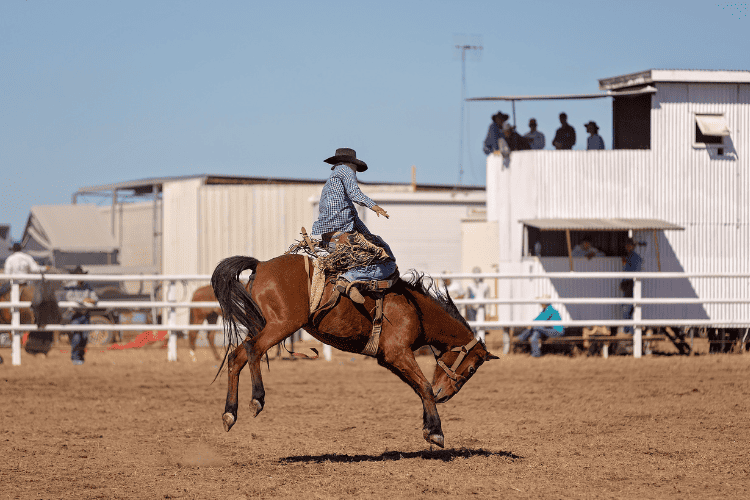
Before I get into a detailed description of these two horse types, let’s make one thing clear: When we’re talking about Broncos and Mustangs, we are not comparing two proper, officially recognized, and firmly standardized breeds.
Both ‘bronco’ and ‘mustang’ are terms used to describe originally feral horses who may or may not be domesticated and trained for various purposes. Still, Mustangs are much closer to a standard horse breed since they have some shared bloodline and characteristics, whereas Broncos can be basically any wild horses utilized in rodeo.
I’ll do my best to describe and compare the most typical characteristics of both horse types as clearly as possible. However, please bear with me if I occasionally need to generalize or get a bit vague.
Bronco vs Mustang Horse Characteristics Summary
| Characteristics | Mustang Horse | Bronco |
| Aesthetics | A wide array of coat colors depending on their origin. Manes and tails can be shorter or longer, fine or coarse. | A wide array of coat colors depending on their heritage. Mane and tails are often long, coarse, and full. |
| Body build | Shorter or medium-sized bodies, strong and muscular, but well-balanced build. | Stocky, muscular, shorter bodies with dominant hindquarters and shoulders. |
| Genetics | No specific issues, but the occurrence of all sorts of health problems typical for other equines. The usual lifespan is between 25 and 30 years. Wild animals live even longer. | No specific hereditary issues, but sporadic occurrence of all sorts of health problems typical for other horses. Lifespan typically ranges from 25 to 30 years. |
| Temperament | Independent, lively, and spirited, but also curious and smart fast learner able to bond quickly. | Energetic, hot-headed, spirited, unpredictable, but also strong, resilient, and graceful. |
| Common use | Ranch work, trail riding, competitive racing, therapeutic riding, etc. | Rodeo, performance, wild horse racing, etc. |
| Price and requirements | From a $125 adoption fee to a few thousand based on training | From several hundred to tens of thousands based on training |
| Origins | Colonial America, 16th century. | American frontier, 19th century. |
Aesthetics
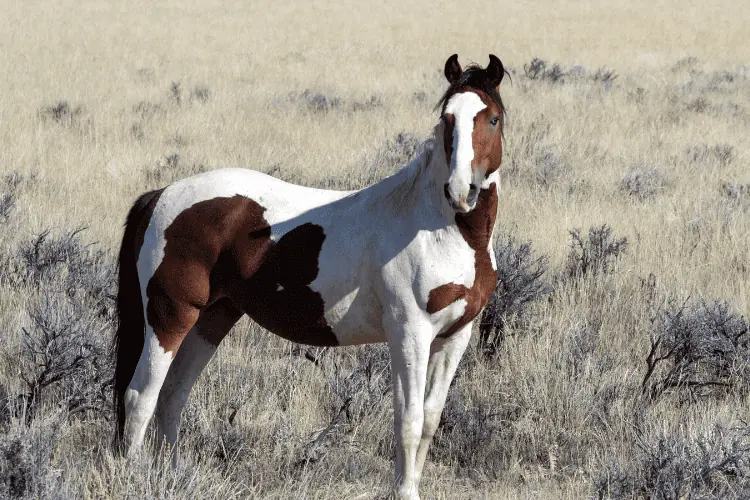
If you’ve ever dreamed of wild horses racing through a dusty landscape toward the sunset, it’s highly possible that they looked just like a typical Mustang. Their manes are usually thick, flowing from side to side or standing upright around the neckline. Some Mustangs have short and wavy manes, whereas others have long and perfectly straight hair.
The tails of Mustangs are also traditionally full and thick, with various lengths from short to very long.
Regarding horse colors, Mustangs sport a range of coats based on their heritage (there are many subtypes of Mustangs like Abstang, Pryor Mountain, Cerbat, or Colonial Spanish Mustangs).
They can be black, chestnut, pinto, palomino, buckskin, roan, etc. I’ve also seen beautiful patterned Mustangs (overo, sabino, tobiano).
With Bronco, the diversity is even greater. Their manes and tails can vary from short and fine to long and coarse. Rodeo riders, however, often prefer animals with long and voluminous hair since it adds to the drama and effectiveness of bucking.
Bronco coat colors are also very diverse. Most of the Broncos I’ve seen were probably bay, chestnut, roan, or pinto, but there are also many gray, roan, buckskin, and palomino bucking horses.
Body Build
Due to their intended use, Bronco horses tend to be thick, stocky, and compact with impressive musculature and steady, well-visible joints.
Their shoulders are strong, and their hindquarters look impressively large, which allows them to perform all those crazy rodeo stunts with ease.
But although they appear pretty robust, Broncos are typically on the shorter side compared to other popular horse types. This helps them rapidly change directions to buck their riders off.
On the other hand, Mustangs are not the tallest horses either. They are usually short or mid-sized, rarely standing over 13 to 15 hands (52 to 60 inches) at shoulders.
Like Broncos, they tend to be thick and sturdy, which helps them navigate steadily through the rugged outback. Nevertheless, Mustang Horses’ body mass is more balanced with less dominant hindquarters and slimmer backs.
All in all, both horse types are perfectly adapted for survival in the challenging terrains of the wilderness where they are at home. These physical traits can also benefit many different activities after domestication.
Genetics
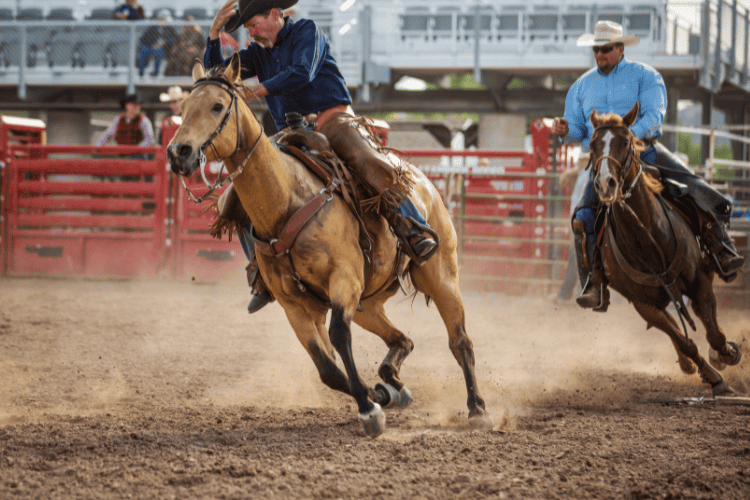
When it comes to genetics, there’s not much specific information to share. Unlike the official horse breeds that were meticulously crossed and bred for hundreds of years with an emphasis on various desired traits, Mustangs and Broncos were formed by natural selection, which comes with many variables.
The opinions on how good or bad this is for their susceptibility to various health issues differ.
Some claim wild horses are healthier because of their stronger genetic profile. Others say it’s quite the opposite since breeding effectively diminished health issues in standard breeds.
From my experience, Broncos and Mustangs are generally healthy, but they still can suffer from most of the issues you could encounter with other breeds.
These include hoof issues and lameness, problems with eyes like Equine Recurrent Uveitis (ERU), Cushing’s Disease demonstrated by hormonal imbalance, or even Hyperkalemic Periodic Paralysis (HYPP) likely related to their common bloodlines with Quarter Horses.
I’ve also met a Mustang with cardiac issues and a Bronco with severe polysaccharide storage myopathy (PSSM). To wrap it up, these wild animals are not particularly prone to diseases but are also not immune to them.
When it comes to the horses’ lifespan, they both typically live up to 25 or 30 years, although reasonable care can allow your horse to live even longer into its 30s. However, feral horses are believed to live considerably longer in the wild – probably even up to their 40s.
Temperament
Broncos (also known as Bronc horses) are wild, energetic, fierce, and incredibly independent animals. After all, that’s what they are expected to be and how they’re trained.
They can be fairly unpredictable and exhilarating, so you need a firm hand and an excellent understanding of horse behavior to handle them in all situations.
The truth is that having a rodeo-type horse is like being in a constant love-and-hate relationship with your equine, which genuinely takes a specific type of rider to manage with grace and joy.
Mustang horses are also known for their independent and strong-willed temperament. However, they are also very curious, intelligent, and adaptable.
With the right amount of patience, skill, and love, these equines can build a strong bond with their owners and excel in various disciplines.
While Mustang is not a recommended horse breed for beginners, if you find a good horse trainer with the necessary experience, you can eventually become sovereign around it pretty fast.
Common Use
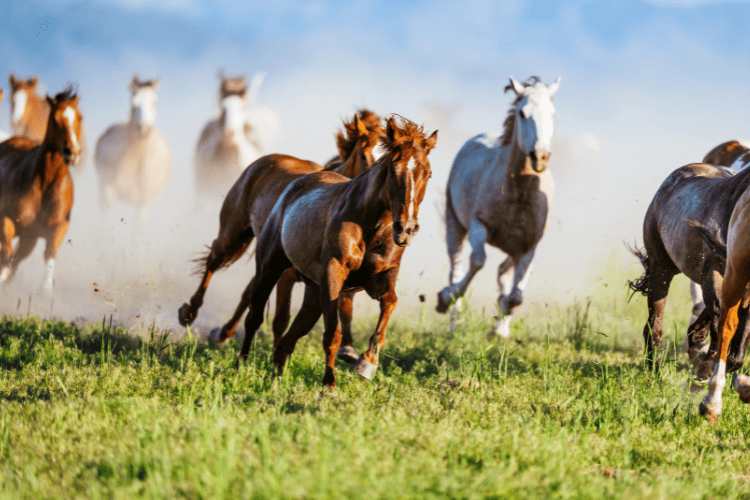
Before acquiring any horse, you should have a good idea of how you want to interact with it and use it.
With Bronco horses, your options are somewhat limited and straightforward:
- Saddle rodeo
- Bareback rodeo
- Wild horse racing
- Performances, etc.
Mustang Horses are more versatile. People use them in all the following disciplines and activities:
- Trail riding
- Recreational riding
- Ranch work
- Rodeo
- Western competitive riding
- Preservation of heritage
- Rehabilitation and therapeutic riding
Price and Requirements
If you’d like to know how much a horse costs, you must consider a wide array of variable factors in the case of Broncos and Mustangs.
Adopting a wild, untamed horse through various dedicated programs can be very affordable (with the Bureau of Land Management, for example, prices start at $125). But training either of these feral horses for some particular discipline will come with additional costs.
On the other hand, if you buy an animal that was already tamed and received some training, costs will go up. Still, they remain relatively low (a few thousand dollars at most) compared to many other breeds.
Origins
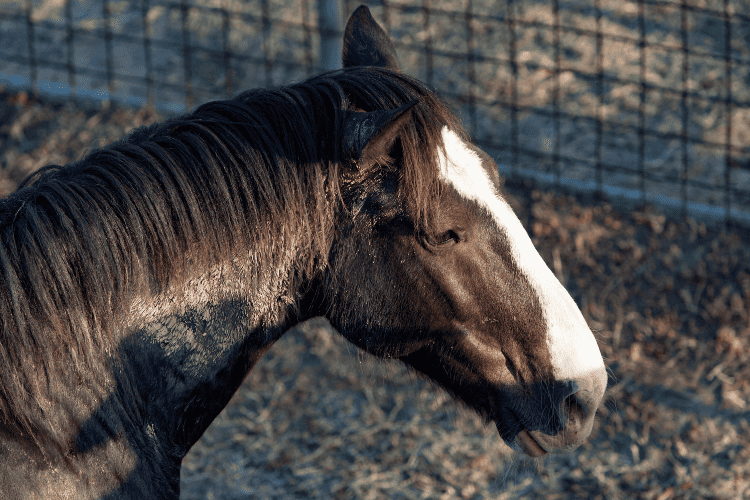
The Mustang horses’ heritage can be traced back to the early 16th century when Spanish scouts brought their European horses to North America. They were called Spanish Mustangs and had a shared bloodline with Iberian horses.
Many of these horses either escaped or were left behind by the explorers and cross-bred with native horse breeds, quickly adapting to the new environment.
Native Americans are believed to be the first ones who attempted to tame these horses. They also started purposely breeding these equines, empowering their strongest traits and shaping their unique identity.
In the 19th century, the new settlers continued breeding these horses for various ranch works. Nevertheless, about 100,000 wild mustangs are believed to be still roaming freely across western states like Nevada, Montana, and Wyoming, and there are many ongoing initiatives to preserve their heritage.
The beginnings of Bronco riding are associated with the 19th-century Old West, where settlers tried to tame wild horses to use them in various works on their ranches. The process was challenging and exciting, which subsequently led to the first unorganized bucking events.
The first rodeo shows, as we know them today, were organized in the 1880’s. The Professional Rodeo Cowboys Association (PRCA), which played a significant role in standardizing bronco riding, was established only in 1936.
Still, the origins of individual bronco horses vary greatly, so it’s hard to talk about some common heritage or bloodline. Many broncos are even related to Mustang horses, so often, the only real difference between the two lies in their use and style of training.
Rider Compatibility
Whether you’re considering a Mustang Horse or a Bronco, first of all, you must know how to train a horse of this type.
Neither of these suits beginner or inexperienced equestrians or those unsure what to do with this type of horse. Still, a Mustang gives you more freedom and a wider range of options, whereas a Bronco requires clear and consistent guidance from day one.
To match either of these horses’ nature, you should be energetic, resilient, and ready to invest long hours into exercise and bonding. Having a professional trainer experienced in this particular field at hand is, of course, a great advantage.
Regarding the physical compatibility, I’d say that you don’t have to be a particularly large rider to handle a wild horse since both Bronco horses and Mustangs are on the shorter side. Still, you should be strong enough to control the horse bucking and twitching.
Can a woman ride a wild horse? Absolutely! I know a few professional female rodeo riders, and you’d never say how strong and confident they are on a bucking horse if you don’t see them in action. There are many female Mustang riders, too, of course.
Bronco and Mustang Horse Care
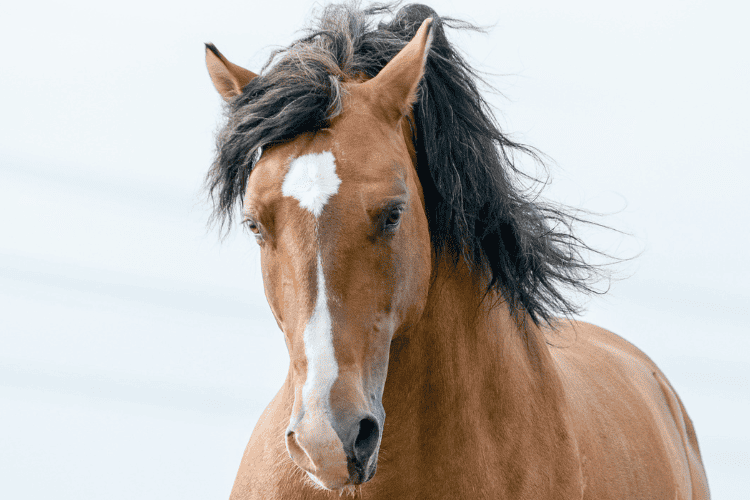
Taking care of a Mustang Horse or a Bronco is not very different from any other horse. Although adapted to living in the wild, they still require proper shelter, well-balanced nutrition, regular grooming, and veterinary check-ups.
Since these animals are powerful and agile, you shouldn’t underestimate good secure fencing (I recommend at least 6 feet tall). It’s not just about preventing the horses from escaping – they can get seriously hurt just trying to flee if they think they can overcome the fence.
I would also like to emphasize that Broncos and Mustangs are naturally social animals who can only thrive properly around other horses. These are not the right horses for those who can only house a single animal in their barn or stable.
Bronco vs Mustang Horse: FAQs
Answer: It’s impossible to say whether a Bronco horse is faster than a Mustang in general since these animals’ abilities can differ significantly based on their individual physical traits and training. Moreover, a Bronco horse can be a Mustang since the name only refers to its feral origin.
Answer: Whether it’s a Bronco, a Mustang Horse, or any other type and breed of equine, they should not be ridden hard before they’re fully mature. I would suggest to wait until they are at least two years old.
Answer: Neither a Bronco nor a Mustang Horse is a good choice for a child. Even though your kid may be a good rider on a standard horse, a wild horse requires a firm hand and lots of experience to handle and tame.
Other Similar Horses
Although a Mustang Horse and a Bronco are both beautiful horses, they are certainly not for everyone. Check our guides to more versatile horses below:

